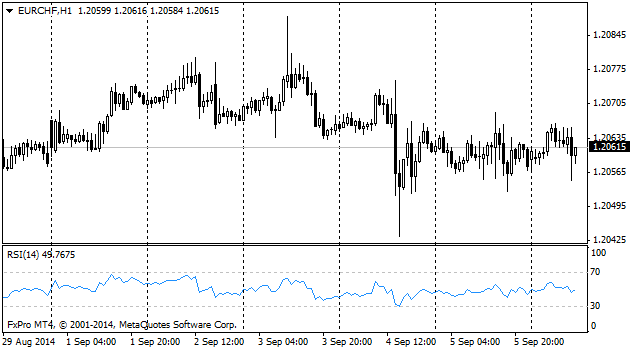EUR/usd
The single currency stays in the narrow range of just 30 pips between 1.2930 and 1.2960. The pair is not strong enough to either start growth or to resume falling after the continuous decline. Thursday's drop was the biggest intraday movement for more than three years. Even the favourable data on Germany's trade balance, published during the EU session today, failed to initiate correction. The trade balance showed surplus of €22.2bln against the expected 17.3. Exports also grew more than expected, by 4.7% against the forecasted 0.6%. Traders preferred to disregard it and focused on import reduction, which can promise decrease in the retail sales in the coming months and/or in the manufacturing PMI in the future. Thus, the improvement was treated as temporary, further followed by a serious drop. Since there's no important news scheduled for today in the USA and Europe, the currency will be under influence of the geopolitical sentiment. As such it can perform a rebound should the negotiations be a success and decline should the squabble about sanctions of Russia and against it continue.
GBP/USD
For the first time the number of Scots desiring independence of their country exceeded those who favour the integrity with England. The results of that survey provoked heavy selling of the British currency since the beginning of trading on Monday. The threat of Scotland's secession has been unnoticed by the markets for the entire year, as the public opinion polls showed that advocates of the united country had a majority. Over the recent month the supporters of the opposite grew by impressive 22% and reached 51% due to the reduction of the undecided. The markets will take “Yes” as a shock and the British currency will fall under pressure. It is hard to predict how strong it will be as it is not very often that countries lose their significant parts. No doubt, even if the British pound remains the national currency, business will suffer much in the coming quarters and even years. Some experts speak about possible decline of the cable by 3-5% should the advocates of independence win. But this is a short-term reaction, and deeper and more continuous processes may affect the price of the British currency more seriously. In this case the cable will be able to drop down to 1.50 till the end of the year. But otherwise it will be strong enough to return above 1.65 or even retest 1.70 in December.

USD/JPY
The yen stopped its decline for a while, but usdjpy still keeps clinging to 105.0. The final reading for the second quarter indicated deeper decline – by 7.1% (annually) instead of the earlier reported 6.8%. The business spending actually shrank by 5.1% against the initially messaged 2.5%. That was the sharpest revision, causing decline of the general rate.

EUR/CHF
The pair keeps trading around 1.2060. bears' attempts to put quick pressure end in pullbacks. The sequence of daily lows (1.2043, 1.2053, 1.2055) demonstrates an upward trend, which gives hope for further growth. We can hardly expect that the pair will go much above 1.2150, but even the movement by 50 pips off the current levels can bring handsome gains with the limited potential of losses
